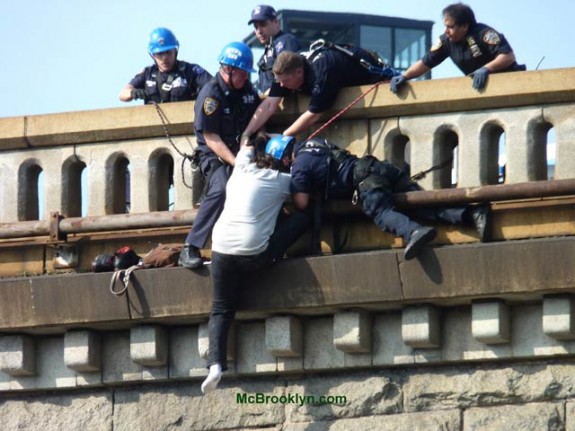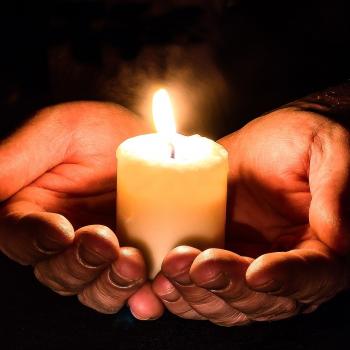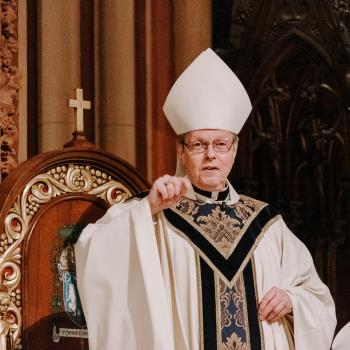It has to be one of the toughest jobs in the world—and for some souls, what these police do is literally a Godsend.
A rare look into the work of the men who try to rescue suicide jumpers, from the New York Times:
On a concrete ledge off the upper deck of the George Washington Bridge, more than 200 feet above the swift and leaden Hudson River that November night, the two detectives gingerly approached the despondent man as he contemplated jumping.
The plunge, at a speed of more than 60 miles per hour, would surely kill him.
Detectives Marc Nell and Everald Taylor, tethered to the bridge and to their rescue truck with nylon harnesses and heavy rope, knew to resist the urge to pull the man to safety. It was not time yet.
“Tell me your name,” Detective Nell said, tapping into the emotional and psychological arsenal that he had acquired in training. “Talk to me.” “Think of your family.”
Sometimes the detectives do most or all of the talking. It does not always matter. What the detectives are probing for is not necessarily conveyed in words. They are looking for an opening. A moment of doubt.
“Once you see that light, you see their facial expression change, their body posture change, and you think: ‘Oh, I got them. O.K., they are not going anywhere,’ ” Detective Nell said. “It’s like when a boxer gets that shot and he knows that the opponent is wobbly and he just keeps going at that same spot.”
In this case, Detectives Nell and Eddie Torres, a third officer who had joined the rescue, did what they refer to as the Grab. They seized the man, pulling him off the ledge and over a guardrail.
Each year, the Police Department receives hundreds of 911 calls for so-called jumper jobs, or reports of people on bridges and rooftops threatening to jump. So far this year, that number is on track to surpass last year’s total, 519.
The department’s Emergency Service Unit responds to those calls. The roughly 300 officers in the unit are specially trained in suicide rescue, the delicate art of saving people from themselves; they know just what to say and, perhaps more important, what not to say.
“You wouldn’t want to say, ‘Yeah, things are bad and who knows if they can even get better,’ ” Inspector Robert Lukach, the unit’s executive, said. “You always have to be positive. I like to tell my guys: Bring yourself into it. If he says, ‘Oh, I’m having problems with my wife,’ say: ‘Yeah, I have problems with my wife, too. My wife just yelled at me yesterday for not doing the dishes.’ ”
The officer’s goal is to form a rapport with the person and seize upon the one emotional chord that will get him or her to climb down from the edge. “You have to understand and extend yourself because your obvious goal is to save someone’s life,” Inspector Lukach said. “So if you have to give a little, you give a little. That’s the sacrifice you make.”
The mental gymnastics can go on for hours, and do not always pay off.












